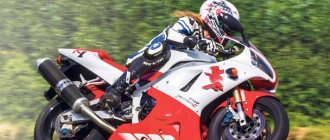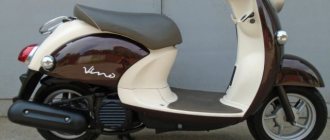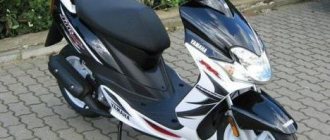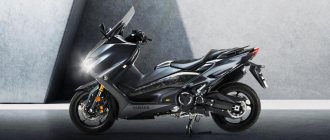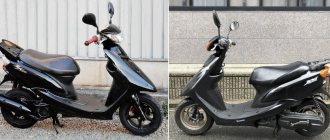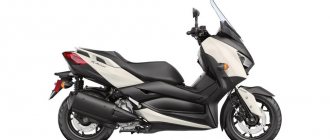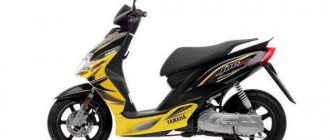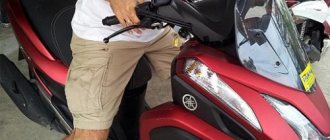Yamaha Cygnus X 125 scooter Yamaha Jog scooters Yamaha Jog RR scooter Yamaha Jog C scooter Yamaha Jog Z scooter Yamaha Super Jog Z scooter Yamaha Jog Z scooter NextZone Yamaha Jog Aprio scooter Yamaha Jog Artistic Spec scooter Yamaha BWs scooter Honda Cub scooters Honda Dio scooters Honda scooter Dio AF 18 Scooter Honda Dio AF 27/28 ZX/ZR Scooter Honda Dio AF 34/35 Scooter Honda Dio AF 34 Cesta Scooter Honda Dio AF 56/57 Scooter Honda Dio AF 62, AF 68 Scooter Honda Dio Z4 AF 63 Scooter Honda Tact AF 24 Honda Tact scooter AF 30/31 Honda Zoomer scooter AF 58 Honda Lead scooter Honda Giorno Crea scooter AF 54 Honda Giorno scooter AF24 Honda Gyro Canopy scooter Huatian Spider 2 scooter Baotian Tanco 50 scooter GX Stinger scooter SYM Jet EuroX scooter LIFAN ZID LF50QT scooter -8A
The files are stored on LetItBit hosting and they can all be downloaded for free. I get income from every download. If you also have a website, you can also start making money with LetItBit.
Yamaha Jog scooter.
Instructions for design, maintenance and repair. >> Technical characteristics of "Legion-Avtodata"
Specifications
Note. Below in the text the following designations for modifications of Jog scooters are used: type 1 - Jog Artistic Spec. type 2 - Jog Aprio 4JP1 Weight: type 1 - 63 kg type 2 - 66 kg
Engine (type 1) model - Yamaha CY50 type - 2-stroke, carburetor number of cylinders - 1 displacement - 49 cm3 cylinder diameter x piston stroke - 40.0 x 39.2 mm compression ratio - 7.2 fuel consumption (with 30 km/h) - 1.4 l/100 km power - 6.8 hp. at 7000 rpm torque - 7.0 Nm at 6500 rpm distribution system - reed valve at the inlet
Engine (type 2) type - 2-stroke, carburetor number of cylinders - 1 displacement - 49 cm3 cylinder diameter x piston stroke - 40.0 x 39.2 mm compression ratio - 7.3 fuel consumption (at 30 km/h ) — 1.5 l/100 km power — 6.8 hp. at 6500 rpm torque - 7.5 Nm at 6000 rpm distribution system - reed valve at the inlet
Fuel tank capacity: type 1 - 3.5 l type 2 - 6.0 l Oil tank capacity - 0.8 l
External speed characteristics of the engine.
Air filter 1.2 liter air filter with oil-impregnated foam filter element.
Carburetor Type 1 type - Teikei Y14P throttle diameter - 13.9 mm main jet - No. 76 idle jet - No. 42 enrichment jet - No. 48 idle speed - 1800 rpm Type 2 type - Y16P/1 main jet - No. 80 idle jet - No. 42 enrichment jet - No. 48 Idle speed - 1800 rpm
A starter enricher is installed on the carburetor. When starting a cold engine, the enricher shut-off needle is retracted and the fuel mixture is enriched. After starting the engine, current from the generator flows to the heating element, the thermoelement heats up, its working fluid expands and the enrichment channel is closed.
1 — heating element, 2 — temperature-sensitive element, 3 — enrichment plunger.
Cooling system Air cooling, forced. Air is forced by a fan to the cylinder cooling jacket.
Oil pump Oil pump with worm drive from the crankshaft.
Ignition system Contactless ignition system (CDI - “Condenser Discharge Ignition”). The two-stroke engine of the scooter uses a flywheel-type ignition system, which simultaneously ensures the operation of lighting devices and charging the battery. Magdino combines a magneto and an alternator. It consists of a stationary stator on which a transformer and windings of lighting and charging systems, a capacitor and a breaker are installed; a rotating rotor on which magnets are attached.
Flywheel-type Magdino allows you to avoid installing a flywheel, does not require the installation of an additional drive, and does not require additional installation of a generator.
Transmission The transmission is continuously variable, with a V-belt variator. The clutch is automatic centrifugal, combined with a driven pulley. The rear wheel is driven through a two-stage gearbox with spur gears.
first stage gear ratio - 3.692 second stage gear ratio: type 1 - 3.454 type 2 - 3.00C variator gear ratio - 2.530-0.900 clutch start rotation speed: type 1 - 3500-3900 rpm type 2 - 3300-3700 rpm min speed of full clutch engagement: type 1 - 5900-6400 rpm type 2 - 4500-5500 rpm
Variator The variator consists of a V-belt and two pulleys. The V-belt drive pulley consists of two conical surfaces - “pulley cheeks”, with a gap (“groove”) between them. The drive pulley is connected to the crankshaft, the driven pulley (via a clutch) is connected to the rear wheel gearbox. The distance between the pulley cheeks can vary. On the drive pulley this is done using a variator clutch.
The cheeks of the driven pulley are compressed by a spring. As the rotation speed increases, the variator clutch brings the cheeks of the drive pulley together, while the belt is squeezed from a position close to the center of the pulley to its periphery. Since the length of the belt is constant, its tension increases, and it pushes the cheeks of the driven pulley apart, moving towards the center of the pulley. The gear ratio of a variator is the ratio of the radii along which the belt passes on the driven and driving pulleys. An increase in rotation speed causes a decrease in the gear ratio, which corresponds to the inclusion of higher gears in a manual transmission. The disadvantage of an automatic variator is that the gear ratio depends only on the rotation speed, without taking into account the load of the driven pulley.
The coupling body 1 is the movable cheek of the pulley. A rotor, a bushing 3, and a fixed pulley cheek 2 are fixed to the crankshaft.
The coupling body can move longitudinally relative to the shaft. Between the rotor and the coupling body there are six rollers 4, which move along channels 5 in the coupling body.
When the engine rotates, the rollers, under the influence of centrifugal force, are displaced from the center of the coupling and wedged between its housing and the rotor.
As the engine speed increases, the rollers diverge further from the center, the clutch body shifts to the left (in the direction of travel, the pulley cheeks converge and the belt is forced out from the center of the pulley to its periphery. Possible malfunctions of the clutch are wear of the rollers (as a result, the rollers jam and the pulley cheeks remain in the reduced position after releasing the gas), difficult movement of the movable cheek due to poor lubrication of the bushing.
Brake system Front and rear drum brakes are cable operated from levers on the steering wheel.
Rear suspension: Pendulum-type rear suspension with monoshock absorber. The power unit block is used as a lever. Suspension travel is 40 mm.
Front suspension The front suspension is a conventional telescopic fork. The diameter of the outer pipe is 31.8 mm, the inner one is 22.2 mm. Suspension travel is 51 mm.
Tires The scooter uses tubeless tires, dimensions 80/90-10 34J. Recommended tire pressure: front wheel - 7.25 kg/cm2 rear wheel - 1.75 kg/cm2
Rear suspension.
Next >>
You can buy Yamaha Jog scooter from us
Yamaha Jog RR: Europe's most popular urban scooter
On the European motorcycle market, Japanese 50cc scooters Jog R and Jog RR appeared in 2001. Scooters are produced by the French and Italian branches of Yamaha. Scooters with a volume of 50, 125, 250 cc are produced with a type designation - MVK MachG. The Jog RR gained the greatest popularity, which became the base model for many other sports scooters.
A review of scooters developed on the basis of the Jog RR allows us to see that their external design is quite different from the original Japanese model. The modernization of scooters in Europe was carried out in terms of improving speed and ergonomic performance. The result is that European scooters, just like Japanese ones, are durable. Not only high-quality spare parts are produced for them in large quantities, but also kits for internal tuning.
In Europe, different types of engines are installed on the base model: 50 and 75 cc, air- and liquid-cooled, two-stroke and four-stroke. Accordingly, the consumption of the Jog RR scooter depends on the type of engine and can range from 1.65 to 2.9 liters per 100 km/h. The latest scooter models are available with a side-mounted air intake and liquid-cooled engine.
The engines are installed in two working positions - horizontal and vertical. Models with a vertical engine have higher ground clearance than scooters with a horizontal engine.
Yamaha believes that engines with a horizontal arrangement and reed valves are the most promising because they:
- have increased power density;
- have a flat traction characteristic;
- reduce vibration levels;
- lower the center of gravity of the scooter;
- Allows you to install a luggage rack under the saddle.
Managers of foreign companies, having assessed the level of sales of small cars and conducted a review of scooters for utilitarian purposes, found out that while the demand for cars is falling, the demand for scooters is constantly increasing. The Jog RR line of urban, sports scooters is especially popular, allowing customers to choose a model of the desired design and with the desired technical characteristics. For example, the speed of a two-stroke, air-cooled Jog RR is 70 km/h, while a four-stroke, liquid-cooled 75 cc, like some Europeans, can reach 90 km/h.
Technical characteristics of the Yamaha Jog RR model
| Length — 1740 mm Width — 675 mm Height — 1065 mm Seat height — 770 mm Wheelbase — 1210 mm Ground clearance — 132 mm Gas tank — 5.5 liters Dry weight — 79 kg Engine volume — 49 cc Liquid cooling Cylinder- 1 (diameter 40 mm) | 2-stroke, piston stroke 39.2 mm Compression ratio - 11.4:1 Power. max-2.9 (3.4) hp at 7500 (6500) rpm Electric starter and kick starter CVT Gearbox Automatic transmission Front telescopic suspension (travel 70 mm) Rear pendulum suspension (travel 60 mm) Front disc brake 190 mm Rear brake drum 110 mm |
In Russia, the average cost of a Jog RR scooter, in good condition, with a two-stroke 50 cc liquid-cooled engine is 95 thousand rubles.


